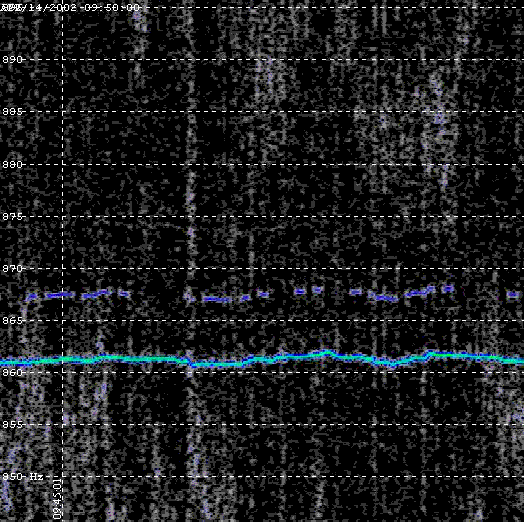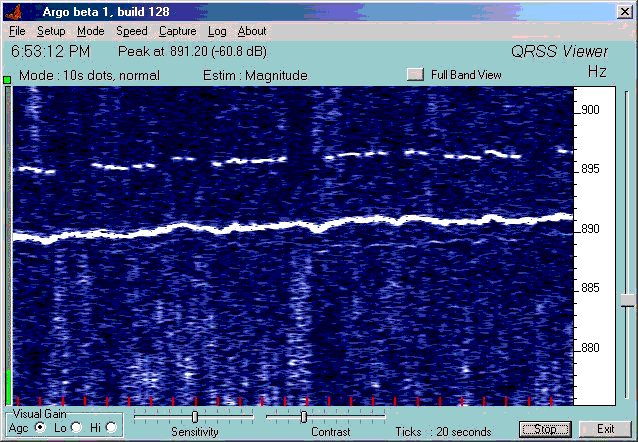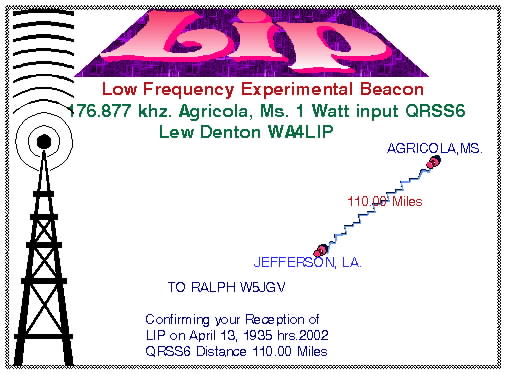
First Signals on my MF/LF Antenna !
By W5JGV
April 14, 2002
The proof of my newly constructed antenna system came on the afternoon of April 13, 2002. At my request, WA4LIP, Lewis, put his LF beacon, LIP, on the air so that I could test my new antenna for the first time. LIP is located about 110 miles away from my QTH. It is an overland path between the two locations, well within ground wave range.
The past few days had been rather noisy since the airwaves were filled with severe thunderstorm racket from a disturbance located about 300 miles south of me in the Gulf of Mexico. Although the storms were a few hundred miles south of my QTH, they sounded like they were right next door! Over the past 24 hours, the noise abated considerably, and I was itching to test my new antenna.
At about 1415, LIP went on the air, and I immediately saw the signal appear on my computer screen! I had the antenna tuner set to an approximate tuning position, and it required just a few minutes to make the final adjustments, and LIP peaked up nicely.
For the past 24 hours, LIP has put a steady signal into my QTH, running about +20 dB over the local noise floor between thunderstorm crashes. This evening the thunderstorm noise is about +15 dB than it is during the daytime hours, so LIP is just above the average noise floor this evening.
The receive setup here consists of the antenna itself which is coupled through a small ferrite 1:1 transformer for power line noise isolation. The transformer feeds the external antenna input jack of my Sony ICF-2010 receiver. The Sony is set to receive USB and is tuned to 176 KHz. The audio output from the receiver connects to the input of the sound card in an old Pentium computer which runs either Spectrum Lab or ARGO.
The pictures captured below shows the LIP signal clearly. Please ignore the frequency markings, as they are not accurate. LIP is on 176.877 KHz. The Sony receiver makes a great thermometer, and the recovered signal nicely follows the local air temperature in the ham shack!
The strong CW signal below LIP is from my BC-221 calibration oscillator. The BC-221 is quite steady in frequency, and generally drifts less than 4 Hz per 24 hours. Note that the calibration signals apparent drift tracks LIP exactly, showing that it is actually the receiver drifting.

Here's what LIP looked like on my end of the path this morning using Spectrum Laboratory for the RX display.

And here's what LIP looked like on my end of the path this evening using ARGO for the RX display.

My first LF QSL! Thanks, Lewis!
73, Ralph W5JGV
[Home]
The entire contents of this web site are Copyright © 2002 by Ralph M. Hartwell II, all rights reserved.